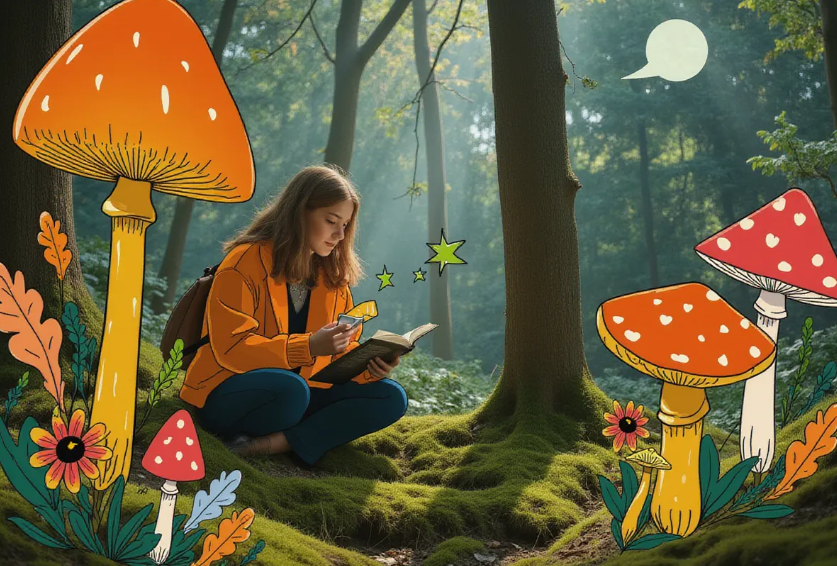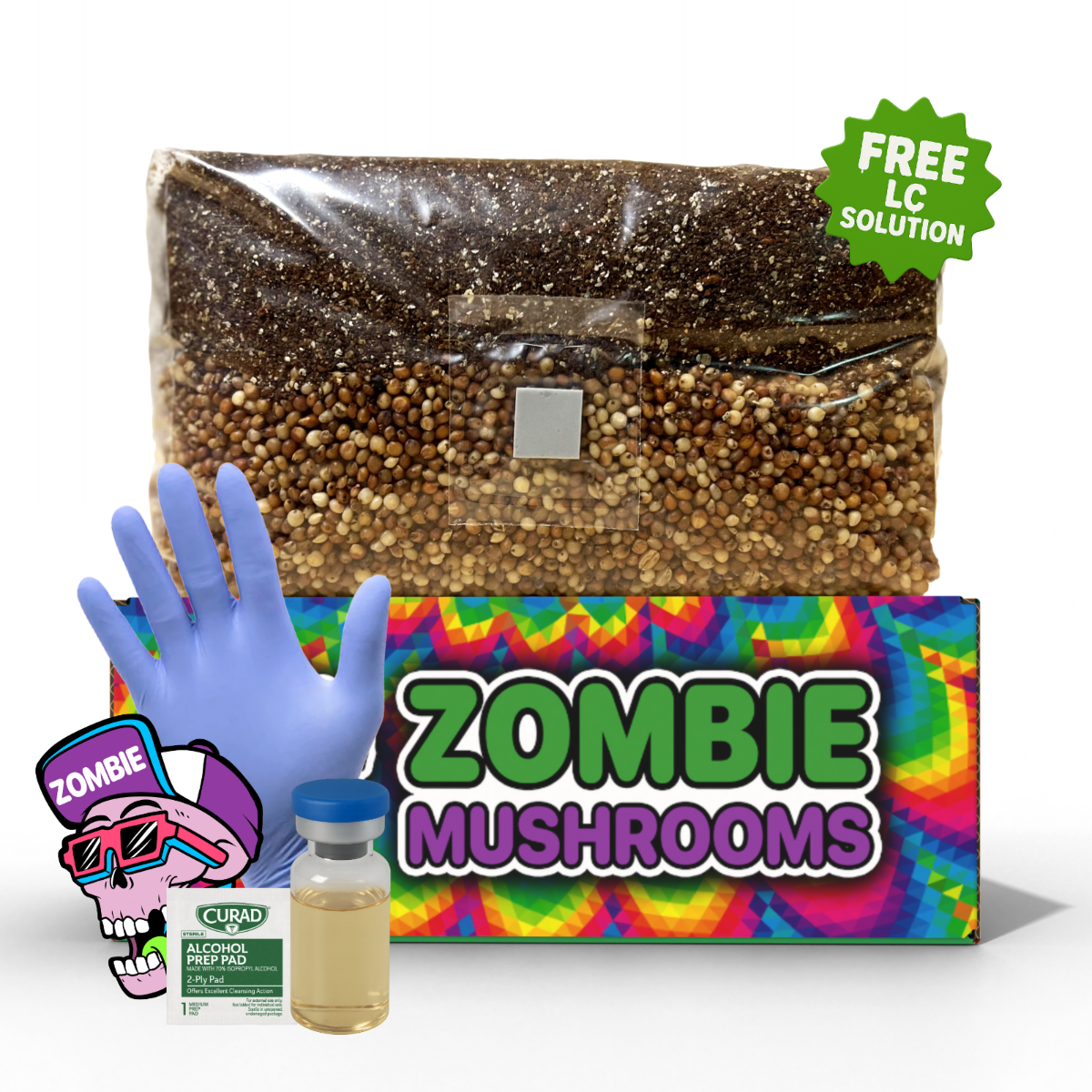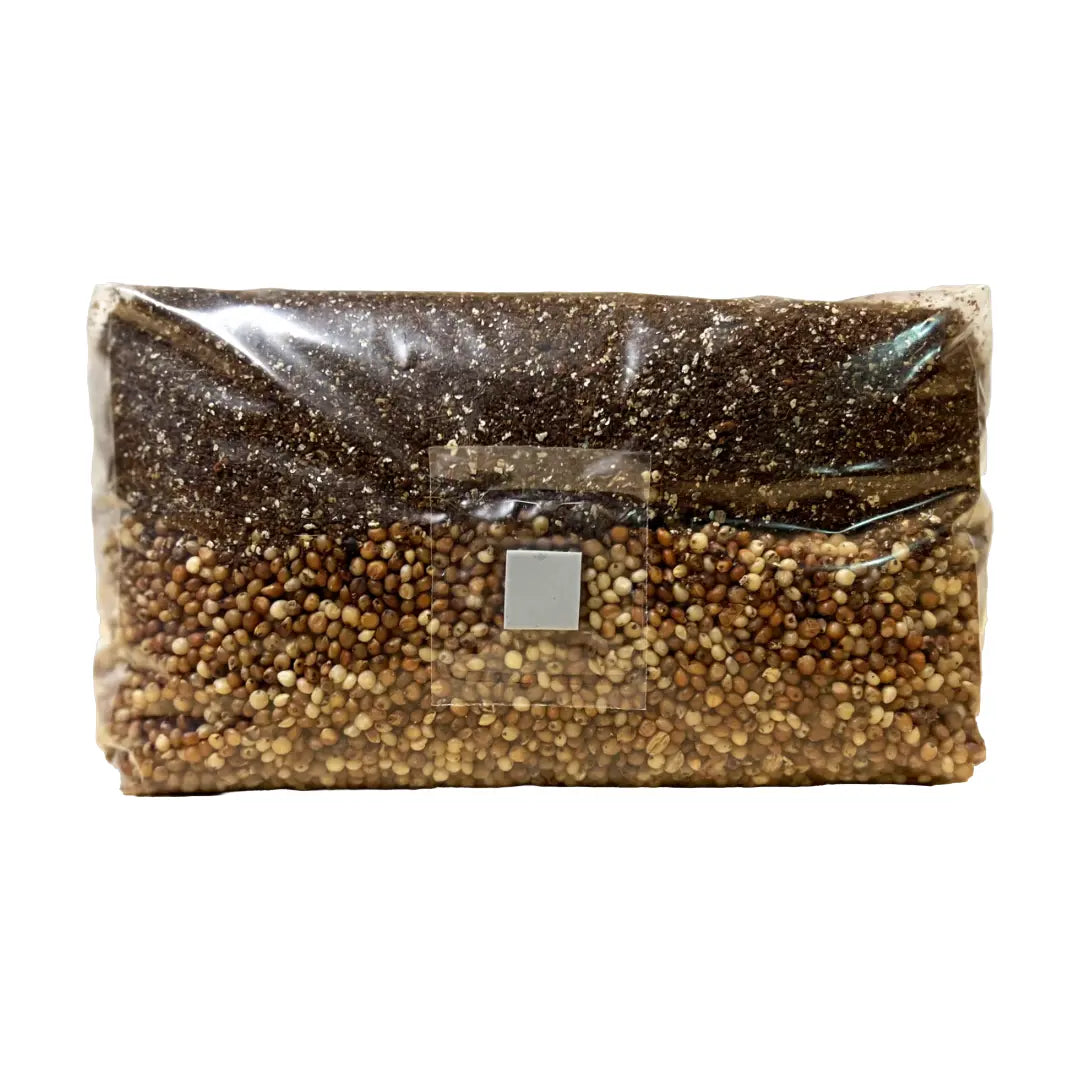⬇️ Prefer to listen instead? ⬇️

- Honey fungus refers to multiple Armillaria species, some of which form the largest and oldest living organisms on Earth.
- Consuming raw or improperly cooked honey fungus can cause digestive distress in some individuals.
- Species like Armillaria ostoyae can produce underground networks spanning over 900 hectares.
- The white spore print of honey fungus helps distinguish it from toxic lookalikes like Funeral Bell.
- Ecologically, honey fungus helps forests regenerate by targeting vulnerable or dying trees.
Honey fungus (genus Armillaria) is notorious for damaging trees yet beloved by foragers for its rich flavor and abundant fruiting. If you’re keen to identify honey fungus safely, grow your own, or forage with confidence, it helps to know the visual traits, toxic look-alikes, and cooking methods that reduce risk. Using tools like mushroom grow kits or mushroom grow bags can help cultivate sample species under controlled conditions to sharpen your identification skills. In this guide you’ll learn how to spot honey fungus in the wild, tell it apart from similar mushrooms, and enjoy it safely when cooking.

Understanding the Honey Fungus Species Group
The term “honey fungus” refers to a group of wood-decaying fungi in the genus Armillaria, rather than a single species. Globally, there are more than 10 identified species within this genus, and several of them are found in temperate regions including the UK, Europe, North America, and Asia.
Each species in the Armillaria genus has slight differences in how they look, where they prefer to grow, and what they do in nature. Here's an overview of the common species you may find
- Armillaria mellea (True honey fungus): This species is most often called “honey fungus,” and it damages many trees. It’s found in many places and is known for growing in large clumps at the bottom of hardwood trees.
- Armillaria gallica: This species is only weakly parasitic and often lives on dead stumps rather than healthy trees. It forms clumps less aggressively than A. mellea but is often more common in cooler northern places.
- Armillaria ostoyae (Dark honey fungus): Known for creating one of the largest living organisms on the planet, this species prefers woods with pine trees and is more aggressive in wetter, mountainous forests.
- Armillaria tabescens: This "ringless honey fungus" does not have the clear ring on the stem, which is not usual for honey fungus. While you can eat it, you must be careful with identification because it lacks one of the standard key features.
- Armillaria cepistipes: This species is less aggressive and mostly acts as a saprophyte, breaking down wood that is already dead.
Despite these differences, all honey fungus species share one basic trait: rhizomorphs. These black, bootlace-like structures grow underground and let the fungus spread from one food source to another, helping them survive really well in woodland areas.

When and Where to Find Honey Fungus
You can typically find honey fungus in the late summer to autumn months, most often between August and November. This depends on the weather where you live. Rainy, cool days make it appear faster as humidity helps the fungus grow.
Ideal Foraging Locations
Look for honey fungus in these key spots
- At the base of both living and dead deciduous trees
- Around decaying stumps, often with bark coming away from the trunk
- On buried roots, which makes the mushrooms seem like they’re growing from the soil
- In packed clusters growing together, sometimes covering several square meters
While the honey fungus itself is above ground for only part of the year, the underground networks—powered by rhizomorphs—work year-round. This lets the fungus stick around and show up again each season, often in the same place.
Be careful when foraging near human-planted trees or gardens; species like A. mellea are strong competitors and could harm cultivated plants and ornamentals.

How to Recognize Honey Fungus (Armillaria): Visual Identification Guide
Knowing how to identify mushrooms correctly is important when picking wild ones to eat. Armillaria species have clear but sometimes tricky visual signs. Here’s a list of the most reliable features to look for
- Cap Shape & Color: Starts convex, becomes flat or slightly sunken. Edge may wave; color varies from pale yellow to deep brown, often darker in the center.
- Gills: Begin pale cream or whitish; attached to stem (adnate) or slightly running down (decurrent), gradually turning pinkish or rusty as spores mature.
- Stem (Stipe): Typically thick and firm; lighter color near cap, darker toward base. Most have a ring or annulus (except some species like A. tabescens).
- Rhizomorphs: Black, bootlace-like root structures under bark or in soil—distinctive underground networks that help the fungus spread.
- Spore Print: White; very helpful to differentiate from similar-looking toxic mushrooms.
Pro Tip: Get in the habit of taking spore prints from every wild mushroom you find. This greatly helps you get better at identifying mushrooms and tells you which ones you can eat and which are toxic.

Toxic and Edible Lookalikes
Even people who know a lot about fungi must be careful when identifying mushrooms, especially when looking for species that have toxic lookalikes. Below are some fungi often mistaken for honey fungus
Galerina marginata (Funeral Bell)
- Deadly poisonous—it has the same amatoxins found in death cap mushrooms
- Grows on wood and looks like small clumps of honey fungus
- Has a brown spore print, darker gills, and a thinner, hollow stem
- Does not have rhizomorphs and often looks more delicate
Kuehneromyces mutabilis (Sheathed Woodtuft)
- You can eat this one, but it is often confused with honey fungus
- Its cap gets darker and sticky in wet weather
- It also grows in clumps on wood
- Has a brown spore print and darker brown gills
Pholiota squarrosa (Shaggy Scalycap)
- Not good to eat because it can cause stomach problems
- Has a yellowish cap with many scales, making it look rough
- Grows in clumps at the base of trees, often mistaken for honey fungus from far away
- Has a brown spore print and does not have bootlace rhizomorphs
Flammulina velutipes (Velvet Shank)
- You can eat this one, it appears in late autumn and winter
- It has no ring on the stem, a slimy cap when wet, and a velvety stem base
- The spore print is white, but the stem and cap feel very different from Armillaria
If you are unsure, check a field guide or talk to an experienced forager before eating any wild mushrooms. Many mushroom poisonings happen from small mistakes in identification.

Can You Safely Eat Honey Fungus? Cooking & Edibility Tips
Honey fungus can be eaten, but only when properly identified and prepared. Follow these safety and taste enhancement guidelines:
- Harvest young caps while gills are pale; older caps or thick stems tend to become woody or bitter.
- Discard the tough portions of the stem or base—especially near soil or bark.
- Thorough cooking is essential: boiling or simmering for several minutes reduces bitterness and potential irritants.
- Start with a small serving to test for sensitivity—some people react mildly to even edible mushrooms.
- Use strong flavors (garlic, butter, herbs) to enhance mild earthy taste.
Taste Profile
Once cooked, honey fungus has a mild, earthy taste with slightly sweet notes. When cooked or pickled properly, it can be a nice part of soups, risottos, and savory sauces.

Preparing and Cooking Honey Fungus
Cooking honey fungus the right way not only makes the texture and taste better—it also lowers the chance of stomach problems.
Preparation Steps
-
Clean Carefully
Brush off soil and dirt. Rinse quickly under water, but don't soak it or it will lose texture. -
Trim Stems
Cut off the base of the stem and remove any tough or dark parts. -
Boil First (Recommended)
Simmer the mushroom caps for 3–5 minutes, then drain all the water. This reduces bitterness and helps get rid of toxins that break down in heat. -
Cook Again
Fry or sauté in oil or butter with garlic, shallots, or onions. Add seasonings like thyme or rosemary. -
Pickling Option
Simmer in spiced vinegar and put into clean jars. Good for using later. -
Freezing
Cook briefly in boiling water (blanch) or sauté, then freeze. This keeps their taste better than drying, which tends to make them chewy or rubbery.
Recipe Idea
- Sauté honey fungus with garlic and shallots, add white wine and cook it down, then finish with herbs and crème fraîche. Serve on toasted sourdough bread or mix into creamy polenta.

What Honey Fungus Does in Nature
Besides being something you can eat, honey fungus helps forest ecosystems in several important ways
- Parasitism: It infects weak trees, making them die faster. This might sound bad, but it opens up space for new trees to grow.
- Saprophytism: It breaks down dead organic material, sending nutrients back into the forest floor.
- Network Creation: Its underground rhizomorphs help move nutrients, potentially sharing resources between trees.
- Habitat Formation: Decaying wood brings in insects, animals, and even other types of fungi, creating areas with lots of different life.
Fun Fact
The Armillaria ostoyae colony in Oregon covers 900 hectares (2,200 acres) and might be over 8,000 years old. This makes it the largest and oldest living thing on land that we know of.
Instead of just seeing it as something that harms gardens, honey fungus should be seen as a keystone species, meaning it is very important for the balance and health of woodland systems.

How to Forage Responsibly and Sustainably
Looking for wild mushrooms means you have a connection with the land. Keep this connection healthy by following these best practices
- Avoid spreading spores or rhizomorphs. Use sealed containers instead of baskets.
- Pick only a few, especially from one spot. Leave some for animals and for more to grow later.
- Don’t pick from city areas or polluted places. Toxins from roadsides or industrial soils can build up in mushrooms.
- Avoid picking from gardens or places that grow fruit commercially, where honey fungus could cause plants to die.
- Keep learning, using many sources to identify mushrooms before eating any wild ones.

FAQ
-
What distinguishes honey fungus from its poisonous lookalikes?
Key features include white spore print, presence of rhizomorphs (“bootlaces”), cap color transitions, thick stem with ring (except some species), and gills that change color as spores mature. -
Which honey fungus species are safe to eat, and which ones are riskier?
Species like Armillaria mellea and Armillaria gallica are commonly foraged and edible. Some species lack rings or have closer resemblances to toxic mushrooms—proper ID is essential. -
Do I need special tools to identify mushrooms safely?
Helpful tools include a spore print setup (paper + dark paper), magnifying glass, field guide, and possibly a small grow kit or grow bag to compare cultivated samples. -
How should honey fungus be cooked to avoid digestive discomfort?
Boil or simmer for at least 3-5 minutes, discard tough stems, cook thoroughly, and eat small amounts initially. Never eat raw. -
Is honey fungus edible for everyone?
Many people tolerate it well, but the fungi may cause mild upset in some—people with allergy sensitivity or digestive sensitivities should proceed with caution.
Mycology Learning Opportunities from Zombie Mushrooms
At Zombie Mushrooms, we think combining foraging with growing mushrooms makes learning better and safer. Check out our
- Mushroom grow kits – See life cycles firsthand
- Cultivation tools – From agar plates to grain spawn
- Educational blogs – Guides for identifying fungi, safety, cooking, and what fungi do in nature
Understanding both wild growth and growing in a controlled way gives you a full picture of how fungi work and helps you get better at identifying mushrooms. Whether you want to be a confident forager or grow mushrooms in your yard, knowledge helps with every new thing you find.
Should You Eat Honey Fungus?
Yes—if you are good at identifying mushrooms, cook it correctly, and pick it responsibly. It is not a mushroom for people who are careless or in a hurry, but honey fungus rewards respect and preparation with a firm feel and a rich, savory taste.
Learning to tell it apart from mushrooms that look similar—but are sometimes toxic—trains your eyes and your sense of taste. As you get to know the species in your area, you will see how even one common fungus shows how amazingly adaptable wild mushrooms are.
Want to go from kitchen to forest? Check out our beginner mushroom grow kits to build your fungi identification skills before you forage.



